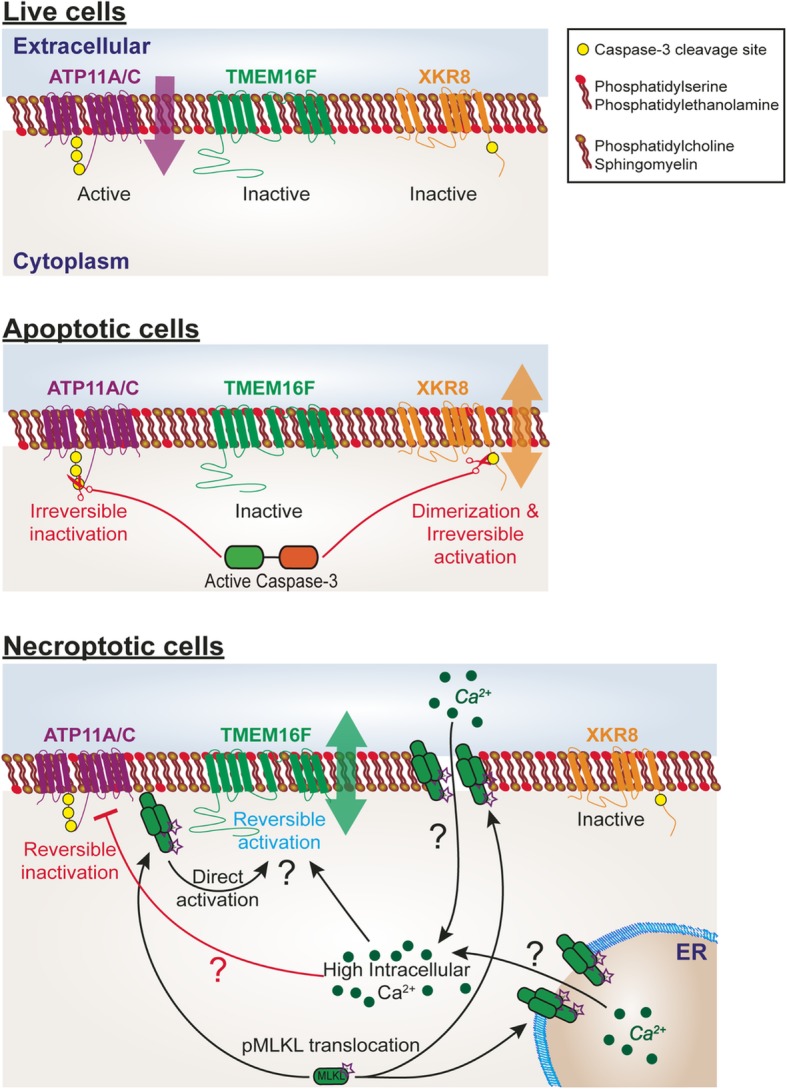Fig. 2.

Mechanism of phosphatidylserine (PS) exposure during apoptosis and necroptosis. In live cells, the flippases, ATP11A and ATP11C, transport PS and phosphatidylethanolamine (PE) to the inner leaflet of the lipid bilayer against a concentration gradient. In apoptotic cells, active caspase-3 cleaves the phospholipid scramblase, XKR8, resulting in its dimerization and irreversible activation. In addition, caspase-3 cleaves ATP11A/C into an irreversible inactive state. The mechanism of PS exposure during necroptosis has not been elucidated. We hypothesized that pMLKL translocation-mediated increase in intracellular Ca2+, from either the extracellular space or the endoplasmic reticulum (ER), activates the calcium-dependent scramblase, TMEM16F, and irreversibly inactivates the flippases, ATP11A/C. pMLKL, when directly associated with the plasma membrane, might also possess the ability to directly effect TMEM16F activity, as well as other yet unknown scramblases
